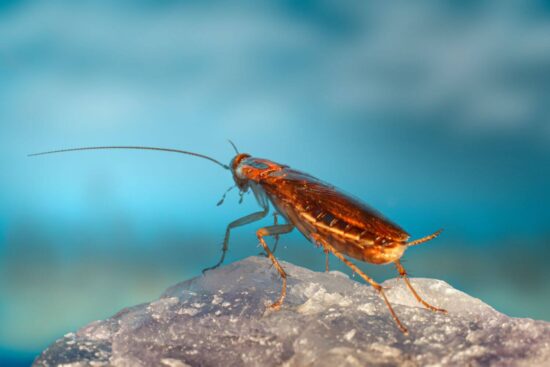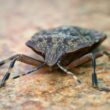Cockroaches are some of the most resilient creatures on Earth, surviving everything from extreme temperatures to food shortages. But exactly how long do these common household pests actually live? The answer might surprise you. While many people think cockroaches live forever, the truth is more complex and depends on several important factors.
Understanding cockroach lifespans can help homeowners tackle infestations more effectively and set realistic expectations for pest control efforts. Let’s take a closer look at how long these unwelcome guests stick around.
Quick Answer: Cockroach Lifespan Overview
Most household cockroaches live anywhere from 3 months to 2 years, depending on the species and environmental conditions. The average cockroach lifespan for common indoor species is typically 6 to 12 months, though this can vary significantly based on factors like temperature, food availability, and shelter.
Female cockroaches generally outlive males, and some species are naturally longer-lived than others. Understanding these basics helps explain why cockroach infestations can be so persistent and why professional pest control often requires sustained effort over several months.
- Starts killing roaches within hours and eliminates nests
- Lasts up to 12 months with child-resistant bait stations
- Easy to use, no mess or strong odors
- Targets roaches you see and the hidden ones too
Lifespan by Common Species
Different cockroach species have vastly different lifespans, which affects how they behave and reproduce in your home.
German Cockroach
The German cockroach typically lives 3 to 6 months as an adult. Despite their shorter lifespan, these are the most troublesome household pests because they reproduce incredibly fast. A single female German cockroach can produce over 400 offspring during her lifetime, with new generations appearing every few months.
These small, tan-colored roaches prefer warm, humid areas like kitchens and bathrooms. Their rapid reproduction rate means that even their relatively short lives can lead to massive infestations if left unchecked.
American Cockroach
American cockroaches are the marathon runners of the cockroach world, living 1 to 2 years on average. These large, reddish-brown insects are often called “palmetto bugs” in the southern United States. Their longer lifespan, combined with their ability to survive in various environments, makes them particularly challenging to eliminate.
These cockroaches typically live in basements, sewers, and other warm, moist areas around homes. While they don’t reproduce as quickly as German cockroaches, their extended lifespan gives them more opportunities to establish stable populations.
Oriental Cockroach
Oriental cockroaches have a more variable lifespan, typically living 1 to 6 months depending on environmental conditions. These dark, almost black cockroaches prefer cool, damp places and are most active during spring and summer months.
Their sensitivity to temperature and humidity means their lifespan can fluctuate dramatically based on seasonal changes and indoor climate conditions. This makes them somewhat easier to control than other species, though they can still establish persistent populations in favorable conditions.
Brown-Banded Cockroach
Brown-banded cockroaches live 3 to 11 months, with their lifespan heavily influenced by temperature. These smaller cockroaches get their name from the distinctive brown bands across their wings and prefer warm, dry environments.
Unlike other species that stay near ground level, brown-banded cockroaches often hide in high places like shelves, picture frames, and ceiling areas. Their preference for warmer conditions means they often live longer in heated homes during winter months.
What Affects How Long They Live
Several environmental factors play crucial roles in determining how long cockroaches live in your home.
Food and Water
Cockroaches are incredibly resourceful when it comes to finding sustenance. They can survive up to 30 days without food, but only about 1 week without water. This makes moisture control more critical than food elimination for pest control purposes.
These adaptable insects will eat almost anything organic, including crumbs, pet food, soap, glue, and even paper. They can also resort to cannibalism if other food sources become scarce. This flexibility helps extend their lifespan even in challenging conditions.
Temperature and Environment
Most cockroaches thrive in temperatures between 70 and 80 degrees Fahrenheit with high humidity. However, they can survive surprisingly cold temperatures, with some species withstanding freezing conditions for short periods.
Indoor environments typically provide ideal conditions for extended cockroach lifespans. Consistent temperatures, available moisture from plumbing and appliances, and numerous hiding spots all contribute to longer survival rates compared to outdoor environments.
Gender Differences
Female cockroaches consistently outlive their male counterparts across all species. This difference exists because males expend more energy competing for mates and engaging in risky behaviors to find breeding opportunities.
For example, female German cockroaches live 200 or more days, while males typically survive only 100 to 150 days. This longer female lifespan means more time for egg production and population growth.
- Starts killing roaches within hours and eliminates nests
- Lasts up to 12 months with child-resistant bait stations
- Easy to use, no mess or strong odors
- Targets roaches you see and the hidden ones too
The Cockroach Life Cycle
Understanding the complete cockroach life cycle helps explain why these pests can be so persistent and why their total time in your home extends well beyond adult lifespans.
Three Stages
Cockroaches go through three distinct life stages: egg, nymph, and adult. The egg stage lasts 1 to 3 months, with eggs protected inside a tough case called an ootheca. Nymphs look like miniature adults but lack wings and reproductive ability, molting 6 to 14 times over 3 to 12 months before reaching maturity.
The adult stage is when reproduction occurs and varies significantly by species. However, the total development time from egg to adult can take anywhere from 3 to 24 months, meaning cockroaches have a substantial presence in your home even before reaching their adult lifespan.
Why This Matters
Multiple generations of cockroaches can overlap in a single infestation, with eggs hatching while adults are still reproducing. This means that even if adult cockroaches have relatively short lifespans, their total impact on your home extends much longer.
Effective pest control must target all life stages, not just visible adults. This is why professional treatments often require several months to be fully effective, as they must account for eggs that haven’t hatched yet and nymphs that haven’t reached reproductive maturity.
Survival Myths vs. Reality
Many misconceptions exist about cockroach survival abilities, so let’s separate fact from fiction.
Common Myths
The idea that cockroaches “live forever” is false. While they’re incredibly resilient, they do die naturally within their species-typical lifespans. The myth that they can survive nuclear war contains a grain of truth but is greatly exaggerated. Cockroaches do have higher radiation tolerance than humans, but they’re not exceptionally resistant compared to other insects.
The claim that cockroaches can live without their heads is actually true, but only for about one week. They eventually die from dehydration, not from the inability to breathe, due to their unique respiratory system.
Actual Survival Facts
Cockroaches can survive up to 30 days without food under ideal conditions, but this is their absolute maximum. They’re much more vulnerable to water deprivation, surviving only about a week without moisture.
Their real survival advantage comes from adaptability rather than superhuman endurance. They’re excellent at finding food sources, hiding from predators, and adapting to various environmental conditions. This flexibility, combined with rapid reproduction, makes them successful pests rather than individually indestructible creatures.
What This Means for Homeowners
Understanding cockroach lifespans has important implications for anyone dealing with an infestation.
Pest Control Implications
Even species with shorter lifespans can establish persistent populations because they reproduce quickly. German cockroaches, despite living only 3 to 6 months, can produce multiple generations per year. This means that effective control requires sustained effort over 2 to 3 months minimum.
Professional pest control services understand these lifecycle patterns and time their treatments accordingly. They target not just visible adults but also hidden eggs and developing nymphs that will become the next generation of pests.
Prevention Tips
The most effective prevention focuses on eliminating the resources that extend cockroach lifespans. Fix leaky pipes, eliminate standing water, and keep areas dry to limit their water access. Clean regularly and store food in sealed containers to reduce available nutrition.
Seal cracks and gaps around your home to block entry points, and reduce hiding spots by decluttering, especially cardboard boxes and paper materials. These steps make your home less hospitable and can significantly reduce how long cockroaches live in your space.
Conclusion
Cockroach lifespans vary dramatically depending on species, environmental conditions, and available resources. While German cockroaches might live only 3 to 6 months, American cockroaches can survive up to 2 years. Environmental factors like temperature, humidity, and food availability play crucial roles in determining exactly how long cockroaches live in any given situation.
The key takeaway for homeowners is that understanding cockroach lifespan helps set realistic expectations for pest control efforts. Even short-lived species reproduce quickly enough to maintain persistent populations, while longer-lived species can establish themselves for years if conditions remain favorable. Quick action and sustained prevention efforts are essential for effective cockroach control, regardless of which species has invaded your home.



